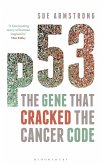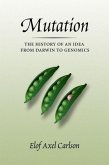With the rise of genomics, the life sciences have entered a new era. Maps of genomes have become the icons for a comprehensive knowledge of the organism on a previously unattained level of complexity. This book provides an in-depth history of mapping procedures as they were developed in classical genetics. The book shows that the technology of genetic mapping is by no means a recent acquisition of molecular genetics or even genetic engineering. It demonstrates that the development of mapping technologies has accompanied the rise of modern genetics from its very beginnings. In the first section, Mendelian genetics is set in perspective from the viewpoint of the detection and description of linkage phenomena. The second section addresses the role of mapping for the experimental working practice of classical geneticists, their social interactions, and for their laboratory "life worlds." With its detailed analyses of the scientific practices and its illustration of the diversity of mapping, this book is a significant contribution to the history of genetics. A companion volume from the same editors - From Molecular Genetics to Genomics: The mapping cultures of twentieth-century genetics - covers the history of molecular genetics and genomics.








